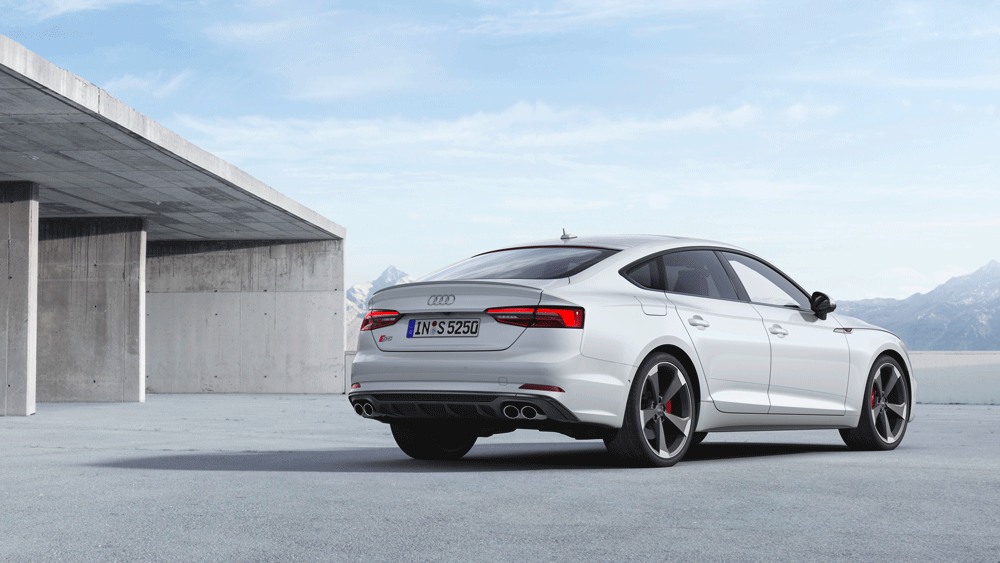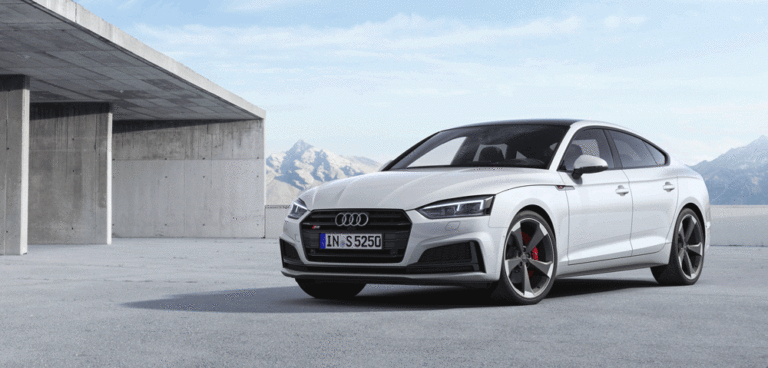German OEM Audi has revealed that, for the first time in its history, the S5 will have a V6 diesel at its heart. Underpinned by mild-hybrid technology, the 3-liter TDI engine now produces 347ps and delivers up to 700Nm of torque to the crankshaft between 2,500rpm and 3,100rpm.
The six-cylinder powerplant, which will be introduced in both the S5 Coupé and the S5 Sportback in late 2019, is the most powerful version in the Audi V6 diesel line-up. For the first time in the S5 TDI, a powerful 48V belt alternator starter is the heart of the mild-hybrid system with maximum recuperation power of up to 8kW. A DC/DC converter steps this voltage down for components in the 12V electrical system.
Audi’s TDI engine – which pushes the S5 Coupé to 100km/h in 4.8 seconds, and the S5 Sportback in 4.9 seconds – features a common rail system that injects fuel at a pressure of up to 2,500 bar. The crankshaft, pistons, connecting rods and oil management have been designed to reduce friction in the crankshaft and camshaft drive, while the thermal management system features separate coolant loops for the crankcase and cylinder heads so that the engine oil heats up quickly following a cold start. The coolant flow is directed to the oil cooler, the EPC, the BAS and the compressor case of the turbocharger as needed.
A large turbocharger generates up to 3.4 bar of charging pressure and its variable turbine geometry (VTG) is optimized for low-loss flow. The external low-pressure exhaust gas recirculation (EGR) system extracts the exhaust gas downstream of the particulate filter. This enables the turbocharger to be operated with the full mass flow, significantly increasing efficiency.
The electric powered compressor in the Audi S5 TDI is new to this segment. Located in a bypass downstream of the intercooler, from the outside, the compressor looks similar to a conventional turbocharger. A compact electric motor replaces the turbine wheel, however. With an output of up to 7kW, it accelerates the compressor wheel to 65,000rpm in approximately 300ms.
The EPC is activated whenever the power demand from the driver is high but the energy available in the exhaust flow for driving the compressor wheel is low. If this is the case, the bypass valve closes and directs the intake air to the EPC. The compressed air flows directly into the combustion chamber. This enables the driver to tap the full power of the engine instantly.
The mild-hybrid system has the potential to reduce customer fuel consumption by 0.4-liters per 100km. Mounted on the end face of the V6 unit is the water-cooled belt alternator starter, which is connected to the crankshaft via a high-load poly-V belt. The BAS generates a recuperation power of up to 8kW and 60Nm of torque.
This system interacts closely with the TDI heart, thus enhancing efficiency. When drivers take their foot off the accelerator between 34 and 99km/h, the car can coast for up to 40 seconds with the engine shut off completely. The lithium-ion battery continues to supply electricity.
Audi’s 3-liter TDI transmits its power to a lightning-fast and smooth-shifting eight-speed tiptronic. Its lower gears feature short, close ratios, while the upper gears are long to reduce revs and fuel consumption. In addition, new detailed solutions improve the interplay between the tiptronic and the mild hybrid system.
A clutch in the central transmission interrupts the flow of power when the car is rolling and the engine is either idling or shut off. When coasting, an electric oil pump independent of the combustion engine makes it possible to engage the gear required at restart.
Additional technology modules contribute to efficiency. Narrow springs at the multi-plate brakes in the gear sets separate the plates from one another and thus reduce drag torque. The torsion damper in the tiptronic’s converter includes an RPM-adaptive damper that reduces NVH at low engine speeds.
Both the electric powered compressor (EPC) and mild MHEV systems are embedded in the standard 48V main electrical circuit. A compact, air-cooled lithium-ion battery with a capacity of 0.5kWh installed under the luggage compartment floor serves as the energy center.



